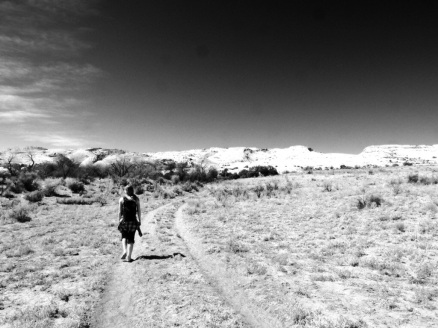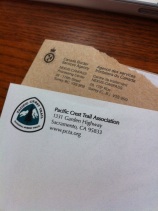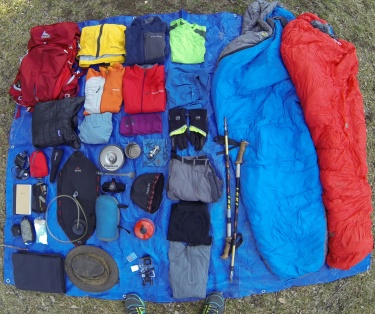Recently a friend asked if I might be interested in writing a blog article about the planning process for the PCT. Until he had suggested it to me, I hadn’t thought about detailing the steps of planning the hike. Sure, I have been loosely documenting my experience with this blog, mentioning my experiences so far with little tidbits about the process of getting ready to hike. But so far, I have not written any specific articles detailing the process as a whole. So here it goes.
Getting the Bug
It all starts with an inspiring series of events. At least that’s how I would describe my experience with ‘catching the bug’ for a long distance hike. Rewind a few (15+) years. When I was a middle school student I got involved with a fantastic program known as Overland (www.overlandsummers.com). They are based out of Williamstown, Massachusettes and offer summer outdoor recreation based camp programs for students from middle-highschool. I had never attended any kind of sleep-away camp and was a bit apprehensive at first. With some coaxing from my family I participated in a two week program in the North East, hiking and mountain biking. Some of our hiking took us on the Appalachian Trail, one of the most famous long-distance hiking trails in North America. This was not the specific moment, but this was the beginning of my love of hiking.
I participated in other trips with Overland as a student, later returning as a trip leader for three years. I took students mountain biking in Colorado, backpacking in Yellowstone National Park, and on my final year as an instructor, co-led a cross country bicycle tour from Georgia to California. Up until our cross-country ride I had never completed a long distance journey and to say we were thrilled with our accomplishment would be an understatement. This trip, which lasted six weeks, was a testament to the ability of the human body, given time, motivation, team work, and the desire to accomplish something ‘great’. Our group of students and my co-leader amazed me with what we all accomplished together.
Fast forward. Some time after my coast to coast bike tour it occurred to me: I biked 3000 miles in 6 weeks, why couldn’t I hike 2000+ miles in 5-6 months? During college in Maine, I had some opportunities to hike on the AT near it’s Northern terminus in Baxter State Park and on occasion I had the opportunity to meet and chat with some AT thru-hikers. They seemed like an odd breed, talking about eating gallons of ice cream in mere minutes, carrying VERY simplified backpacking setups, and sporting strange ‘trail names’. I wanted to be one of these people.
I didn’t catch the bug at one specific moment, I had lots of opportunities and experiences that conspired to make the idea of thru-hiking a long distance trail something that I wanted to do at some point in my life.
When is the time right?
While getting excited and deciding that you would like to attempt a thru-hike might seem like a big step (actually wanting to hike thousands of miles you say?), deciding when the time is right is a much more difficult task. We don’t exactly live in a society that embraces the idea of leaving your job (or career?), home, and responsibilities (who needs those anyway…) behind, in favor living in the woods for 4-6 months. And even if this sounds appealing, how realistic is it to just pick up and go? Could you leave your job and would it be waiting for you 5 months later to pick up where you left off? Do you have the ability to move out of your home so that you don’t have a mortgage or rent? Can you afford your other bills – phone, health insurance, student loans while not working? Regardless of money and societal expectations, you also have your family and loved one’s who will no doubt have an opinion of the hike you are about to embark on.
Luckily for me conditions have been just right. It hasn’t been an easy set of events to get to this point though. In addition to a nine year long relationship ending, I was laid off in late September, a month before Thanksgiving. While both of these events have conspired to make my thru-hike attempt possible, I would not wish divorce or loss of work on anyone. They are both terrible and will make even the most confident person examine their self-worth. Instead of getting depressed about the shitty hand I was just dealt I decided to remain positive. I no longer had any responsibility to anyone other then myself – this is a good place to find yourself if you want to go hiking for 5 months.
Without speaking too much longer on ‘when the time is right’, it has become clear to me that often there is no ‘right’ time. You simply have to get off your ass and DO IT. Don’t wait. You are only going to get older and fatter (it’s the American way). You are only going to become more entrenched in your way of life, having commitments, obligations, bills, events, Jesus, you might even have kids. You either take the steps necessary to make it happen or it won’t. You have to be proactive here, it’s the only way. If you wait, the opportunity could slip by without giving you the slightest chance to embrace to unknown and get out there.
Some stuff you HAVE to do
I already mentioned some big picture stuff like leaving your job, your home, and almost all of your responsibilities. But let’s backtrack a tiny bit. What do you know about the trail? Where does it start? Where does it end? How long is it and how much will it cost you to hike it and what do you need and where will you sleep and… What I am getting at here is research. You have to do some. Behold, the greatness of the interwebs.
I personally started with The Pacific Crest Trail Association website. You will find more information on this site that you can easily digest in one sitting – it is a fantastic starting point complete with maps, trail journals, photos, phone numbers, distances, and any other information regarding this hiking trail you could desire.
Another great course of action would be a Google search for ‘PCT trail journals’ or some similar keyword combination. In the past few months I have come across multiple journals and blogs of previous and aspiring PCT thru-hikers. The experiences and lessons they have learned will no doubt help you refine your planning stages, avoiding some of their mistakes, and learning from their successes.
PERMITS
This is really part of ‘stuff you have to do’ but deserves a small, separate section. The two big ones you will need are:
Long Distance Permit – Information and forms to obtain this are available on www.pcta.org. The paperwork is easy to fill out and straight forward but you will want to do a little bit of general research about the trail prior to filling out the forms. The PCTA will want to know things like your anticipated starting and ending dates in addition to where you will be starting and finishing your hike. This permit is only needed if you are going to be hiking more then 500 continuous miles. I received my permit roughly 2 weeks after sending in my paperwork but the closer you get to April/May, the longer I would anticipate waiting – best to secure this one early.
Permit to enter Canada via PCT – Like the Long Distance Permit, I would recommend securing this as early as possible. I have read about other hikers having to wait over a month to receive this permit after mailing in their paperwork. I got mine in two weeks. You will need a valid US passport and drivers license and color copies will be required in addition to an estimated date of entry to Canada and itinerary while in Canada. While it sounds a little daunting, filling out this paperwork was not very difficult. Write legibly and be as complete as possible to avoid having your paperwork returned or denied.
*There are a couple of other, less important permits you will likely want to secure. All the information regarding permits is provided on the PCTA website – I’ll let you figure it out, it’s part of the adventure!
GEAR
I won’t mention every item because YOU will have to decide what you can and can’t live without. Here is the breakdown as far as I am concerned:
- Three big items – Backpack, Sleeping bag, Tent. These are usually the heaviest items. I am using an internal frame pack (Gregory Z55, my heaviest piece of gear). I am using a silnylon tarp-tent (Black Diamond beta lite). I am using a 20(ish) degree down sleeping bag (Rab neutrino 600). Don’t get hung up too much on weights, but if possible, shoot for under 10 lbs (it’s very doable with today’s fancy-pants materials).
- Cookware – Stove and other cooking items. I am using a small canister stove (MSR micro-rocket) and a titanium (Evernew) cook pot. While I have used and read about others using alcohol stoves (exceptionally light) this is not possible due to fire restrictions in California and possibly other areas on the PCT this year (2014). Consider eating utensils, mug, seasonings, etc.
- Water treatment – I will most likely be using bleach. There are lots of options out there, filters, uv sterilizers, chemical treatments. I would suggest something that is lite, fail-proof, and cost-effective.
- Clothing – Upper and lower body layers. The criteria I am using: Can I wear everything all at once. I am choosing layers that compliment each other and can all be used together (comfortably). Minimalism is key here to avoid bulk and excess weight. In the past month and a half I have removed almost half the items I originally planned on bringing. An important note – you will likely need to make changes based on the region you are in. Your clothing selection for the Southern California desert will most definitely be different then what you need in the Cascades.
- Footwear – Not too much info here. The amount of support you should seek for footwear depends on a couple factors. Do you pronate or supinate? Do you know what these two terms mean? Also, the ‘burliness’ of your footwear should be relative to the weight that you are carrying on your back. The less weight in your pack, the lighter footwear will PROBABLY be sufficient for you. I plan on using trail running shoes. Test your proposed footwear PRIOR to your hike WITH the FULL WEIGHT you anticipate hiking with for DISTANCES THAT ARE EQUIVALENT to what you expect to hike on the trail.
- Other items – Lots of things can be included here. Some extras I am bringing include trekking poles, a camera, a digital voice recorder, a journal, a PLB, and some other small items. Keep in mind ‘even small’ items add up.
My original pack weight was roughly 20lbs. I removed some items and got it down to a little over 15lbs. I am aiming to reduce that number by 2-3lbs more before I get on the trail. Am I a fanatic about pack weight? No, but having hiked with packs as heavy as 85lbs (thanks NOLS) and also with lightweight ‘minimal’ backpacking setups, I have concluded that going light rather then heavy is the correct choice for me.
Training
There is no true consensus here. Some people do a lot of training, some do a little, and some do none. If you have never been on a backpacking trip I would suggest trying it out prior to making all the aforementioned preparations. If you know what to expect then I would suggest incorporating SOME sort of regular physical activity into your daily life. Other then being generally fit I think your thru-hike will kick you into shape. Sure, it will hurt a little at first. The short answer here is that everyone is different when it comes to physical activity and you should train in a way that will prepare YOU so that you can have the greatest chance of success.
Food
Two main options here: buy as you go or resupply via mail. There is also the obvious middle ground where you do a little of both. Using pre-packaged resupply boxes will likely give you better financial control over gear/food but can be limiting. How can you possibly anticipate accurately everything you will need in advance? Also, how will you know exactly how much food you will ACTUALLY consume? I plan on purchasing as I go, but occasionally sending boxes of food/supplies ahead when availability/cost of resources dictates the need.
Sponsorship/free stuff
All I have to say is that this stuff exists. Get creative. Send letters, emails, and make phone calls. Your chances of success will depend on a few factors including what you can offer potential sponsors as well as your persistence and professionalism. Be polite, expect to get turned down a lot, but stay positive and you just might find some great opportunities.
In conclusion…
The above describes SOME of what I have experienced in getting ready for this endeavor. It is highly likely that I have left some key information out (thanks recreational substances!). The important take-away here is that preparing for a trip of this magnitude will be different for everyone. Don’t expect the same experience as I have had. Planning to thru-hike the PCT might be much more complicated, but it might also be simpler. Do your research, have fun with it and make it yours!


